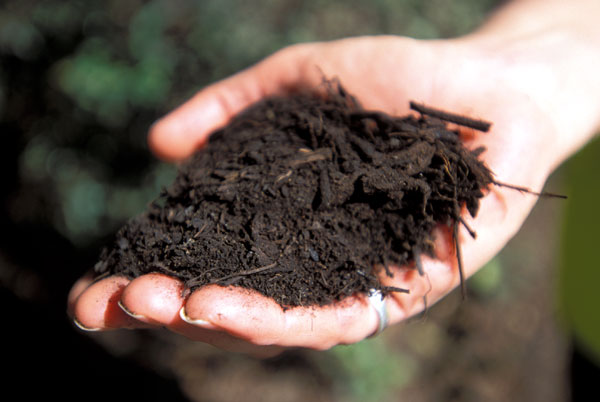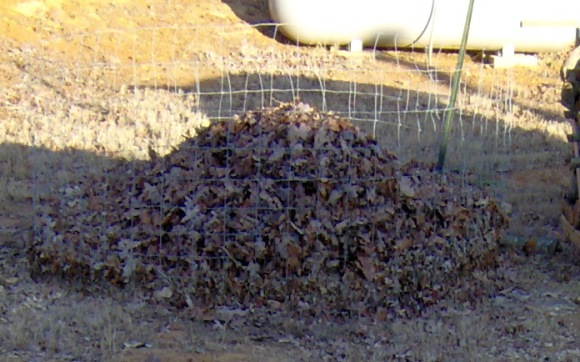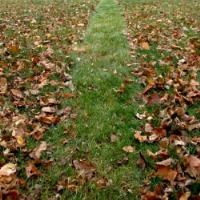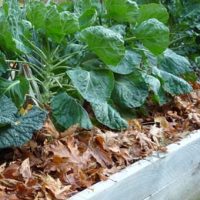 In the November Monthly Home Maintenance Checklist, we recommended composting your leaves instead of simply disposing of them. Why, wouldn’t it be easier to just rake them up and either burn them, or just bag them and send them off to the landfill? Well, not really, when you think about, besides you do not get any benefit from it. No matter which method you use, you have to collect the leaves. When you decide to burn them, you have to stand around and wait for them to burn up fully & the embers to die out. If you decide to bag and toss them, you have to bag them up & either haul it to the street or in some areas bring them to the landfill. In some cases, have you ever brought your leaves out to the street for trash pickup and an hour or so later found them missing? Have you ever wondered why?
In the November Monthly Home Maintenance Checklist, we recommended composting your leaves instead of simply disposing of them. Why, wouldn’t it be easier to just rake them up and either burn them, or just bag them and send them off to the landfill? Well, not really, when you think about, besides you do not get any benefit from it. No matter which method you use, you have to collect the leaves. When you decide to burn them, you have to stand around and wait for them to burn up fully & the embers to die out. If you decide to bag and toss them, you have to bag them up & either haul it to the street or in some areas bring them to the landfill. In some cases, have you ever brought your leaves out to the street for trash pickup and an hour or so later found them missing? Have you ever wondered why?
Black Gold
Black Gold, what’s oil got to do with this? Oil, not a thing, but that is what many gardener’s and landscapers call the final composted product as it can revitalize the soil and give you better crops and / or lawns. All those nutrients that were used by the plants can now be reintroduced into soil instead of relying on artificial fertilizers. The compost improves the soil, improves the plants root penetration abilities, and increases the ability of the soil to soak up the water and let it naturally restore the water table, as earthworms are attracted to the area. Now you can see why gardener’s and landscapers consider the composted material as black gold.
Option 1 – A quick holding area for leaves
The quickest and easiest way to create a compost pile is to get a roll of wire fencing and create a round enclosure approximately 4 to 6 feet wide. This enclosure should be placed in a shaded area to help prevent the pile from drying out. Now all you have to do is rake the leaves up on a sheet and dump them in the enclosure. As the leaves start building up, simply spray them down with a hose and keep adding. Now onto the hard part, waiting for a year or two for them to simply break down to be used. Want to shrink the pile down / make it go faster – mow it / mulch it

Option 2 – Mow them and forget them
 If the option above isn’t quick enough or you might not have an area suitable for a compost bin, how about simply mowing them back into the ground? While a mulching mower would be the best option, a regular mower will work just fine. Simply set the height to about three inches and mow away. Come springtime, most of the leaves will fully be broken down which is a simple, easy and effective method for disposing of the leaves and improving your soil.
If the option above isn’t quick enough or you might not have an area suitable for a compost bin, how about simply mowing them back into the ground? While a mulching mower would be the best option, a regular mower will work just fine. Simply set the height to about three inches and mow away. Come springtime, most of the leaves will fully be broken down which is a simple, easy and effective method for disposing of the leaves and improving your soil.
Option 3 – Mulch em
 If you shred or mulch them, you have a few options that will also help your plants and landscaping. You can easily create planting beds with them around the base of trees, or in shady areas. You could use them as a mulch covering for your flowerbeds or simply use them around the base of shrubs that are sensitive to the cold. The mulched leaves will not hurt or prevent your bulbs or flowers from coming up. Come summer time, you can simply leave them in place or if you do not like the look, add the leaves to your regular compost pile.
If you shred or mulch them, you have a few options that will also help your plants and landscaping. You can easily create planting beds with them around the base of trees, or in shady areas. You could use them as a mulch covering for your flowerbeds or simply use them around the base of shrubs that are sensitive to the cold. The mulched leaves will not hurt or prevent your bulbs or flowers from coming up. Come summer time, you can simply leave them in place or if you do not like the look, add the leaves to your regular compost pile.

Thank you so much, Great information… You keep writing and I’ll keep reading.
Thank you so much, Great information… You keep writing and I’ll keep reading.